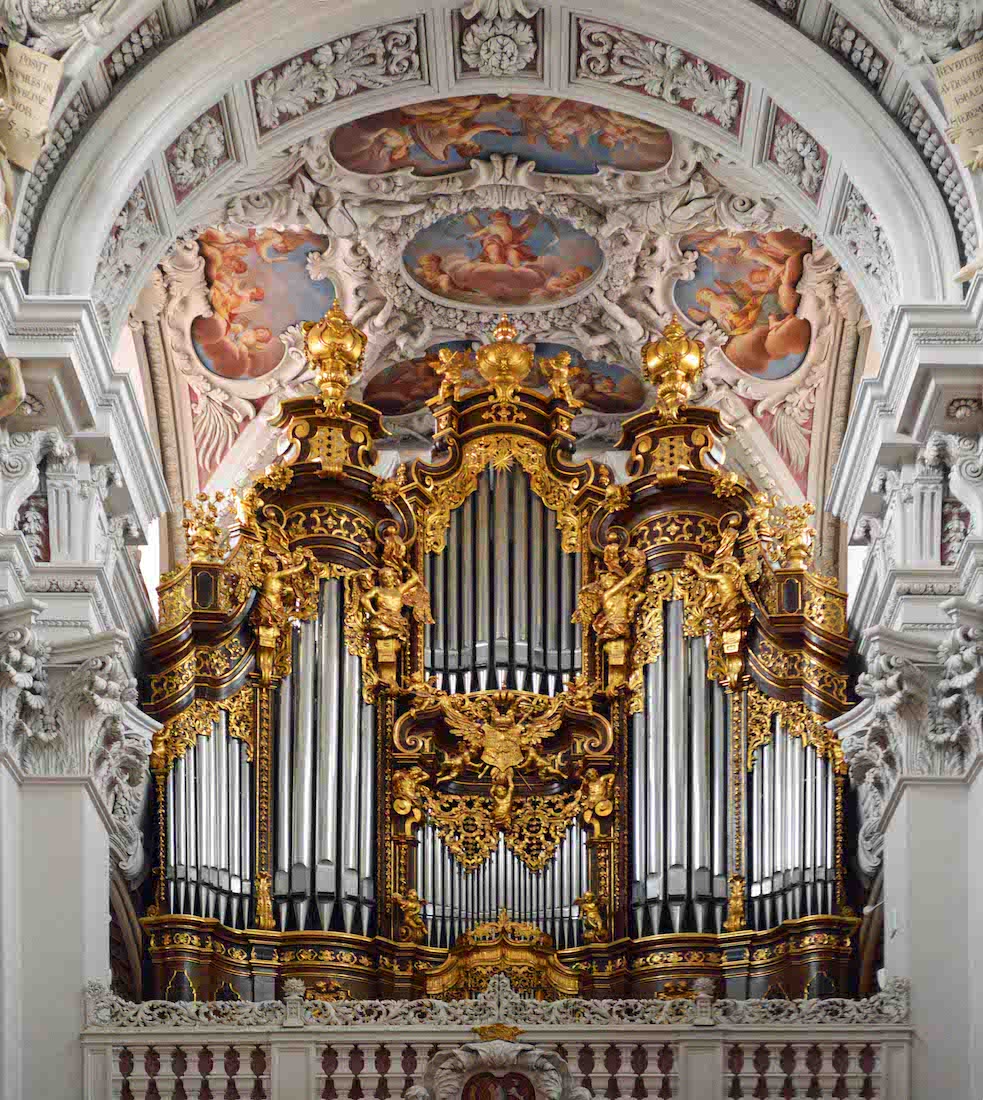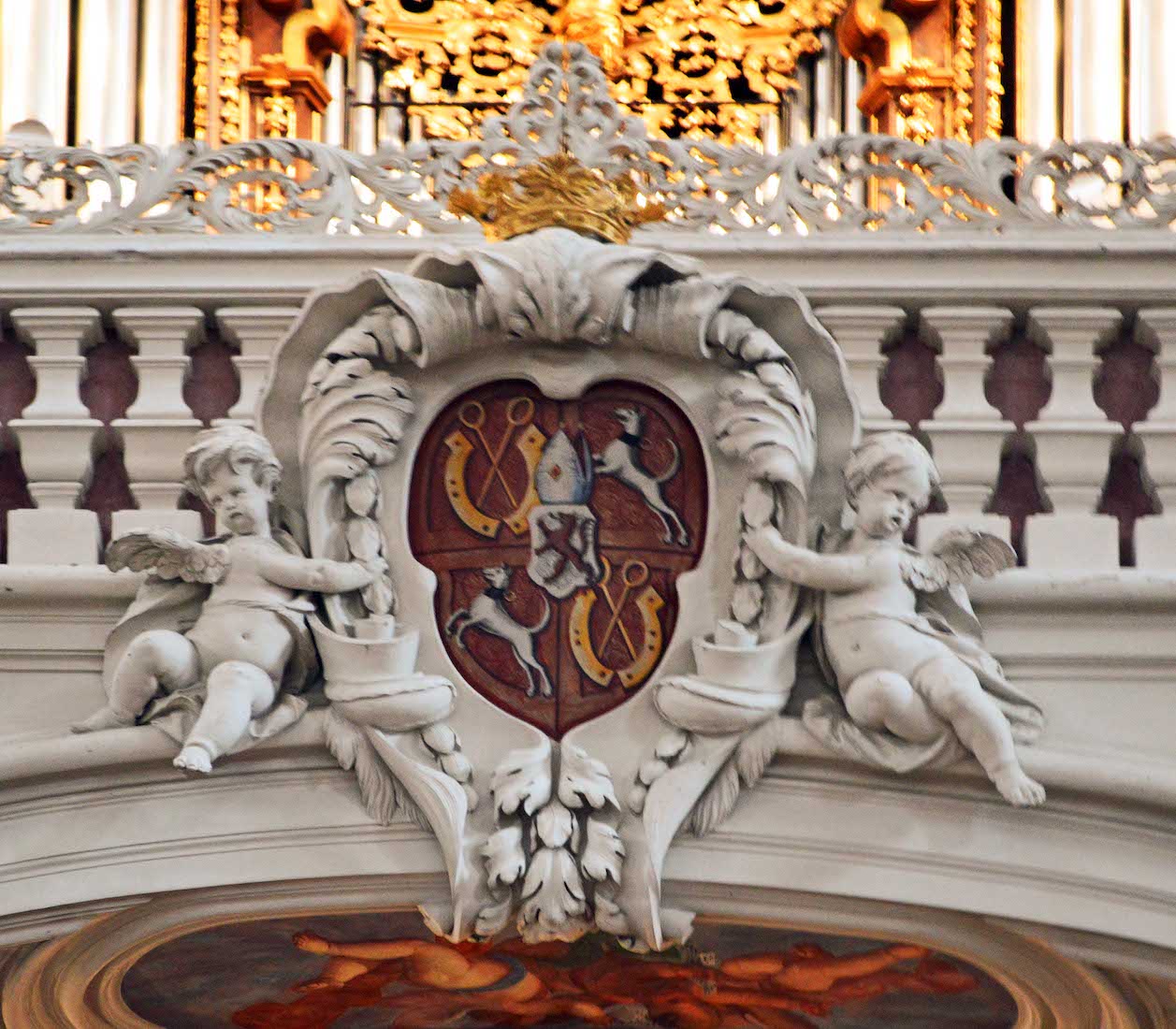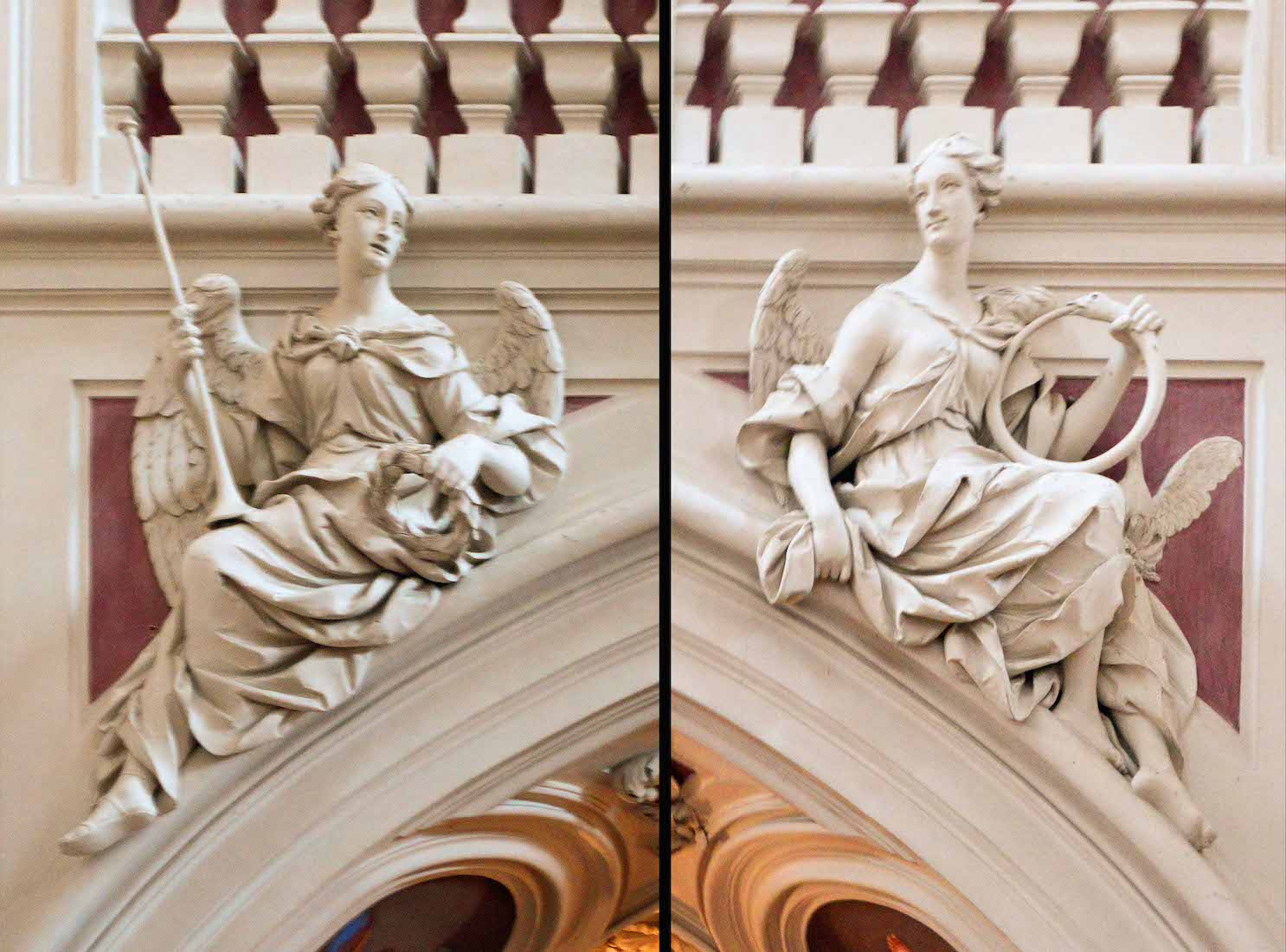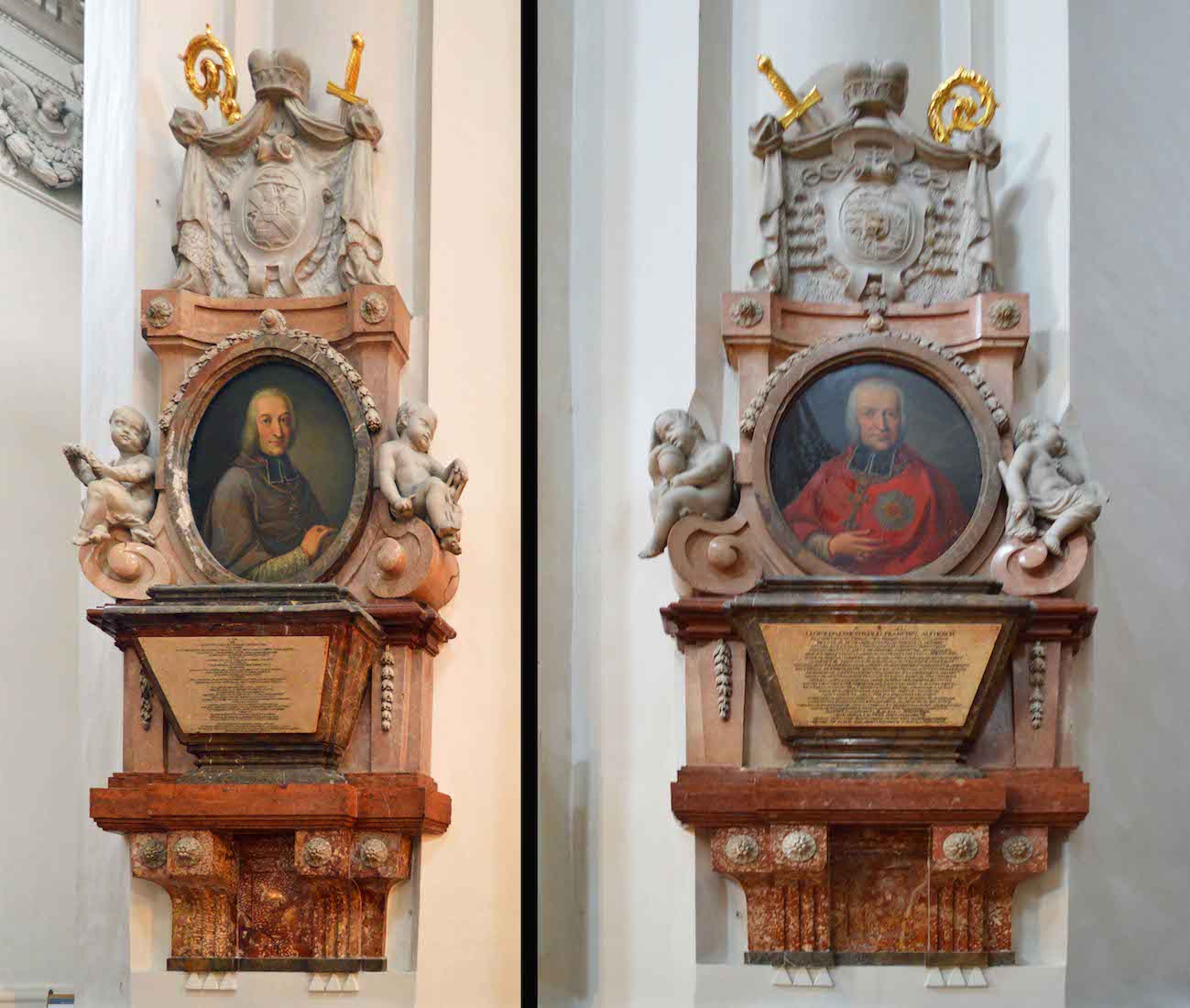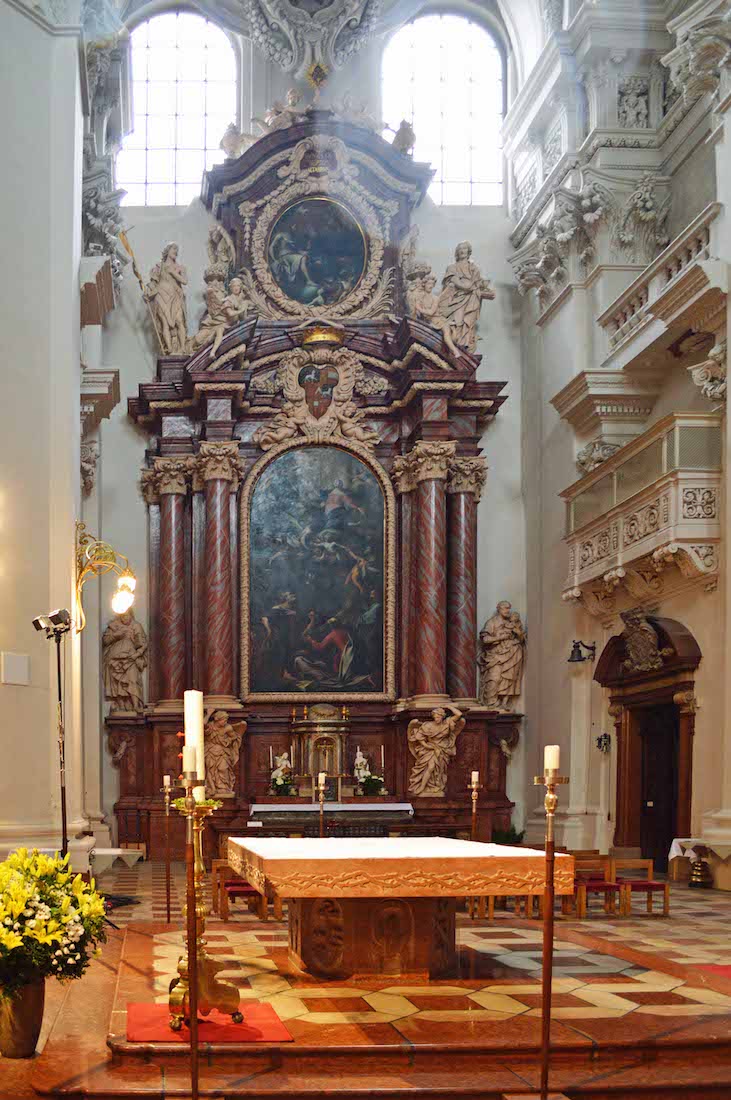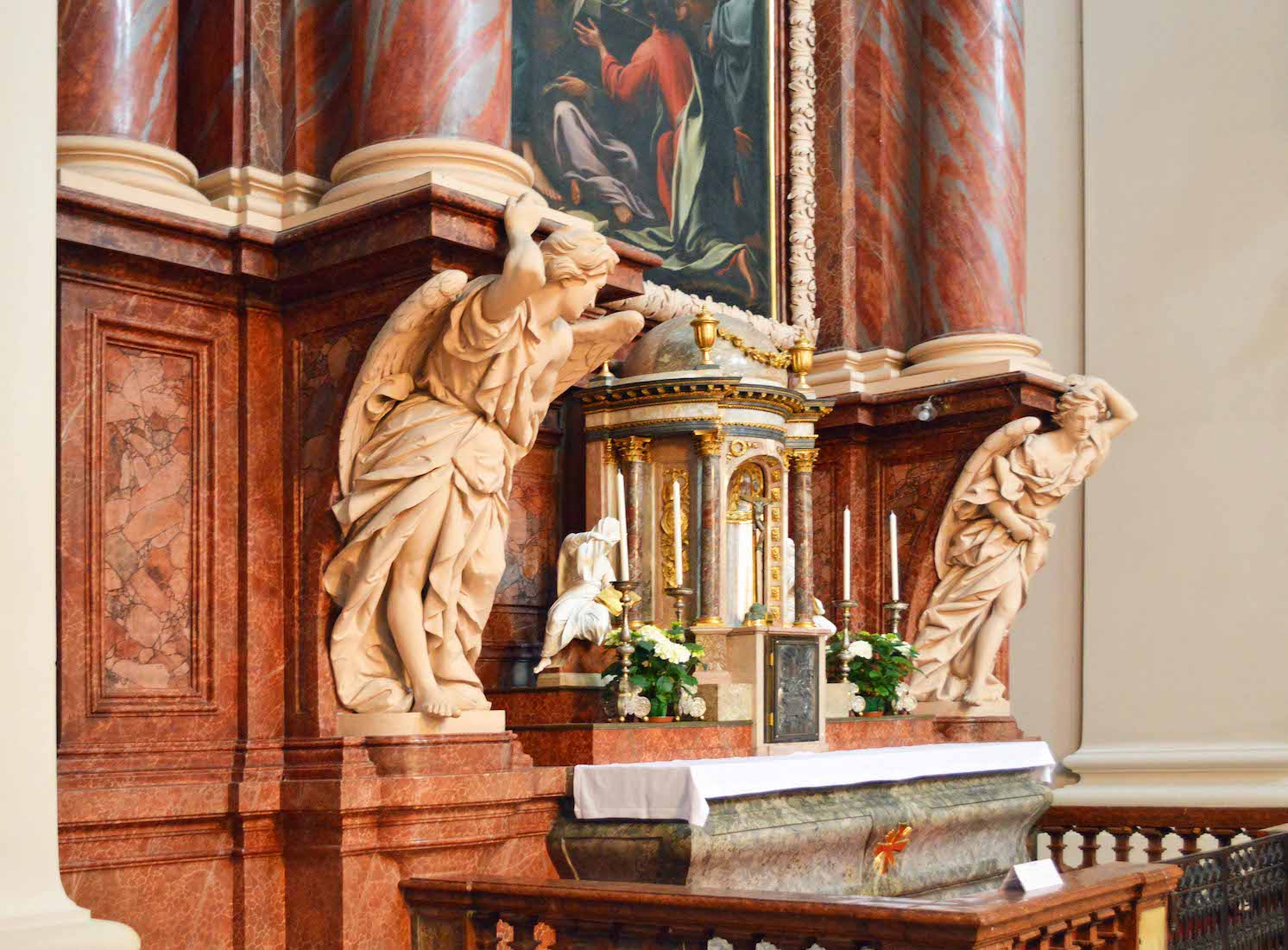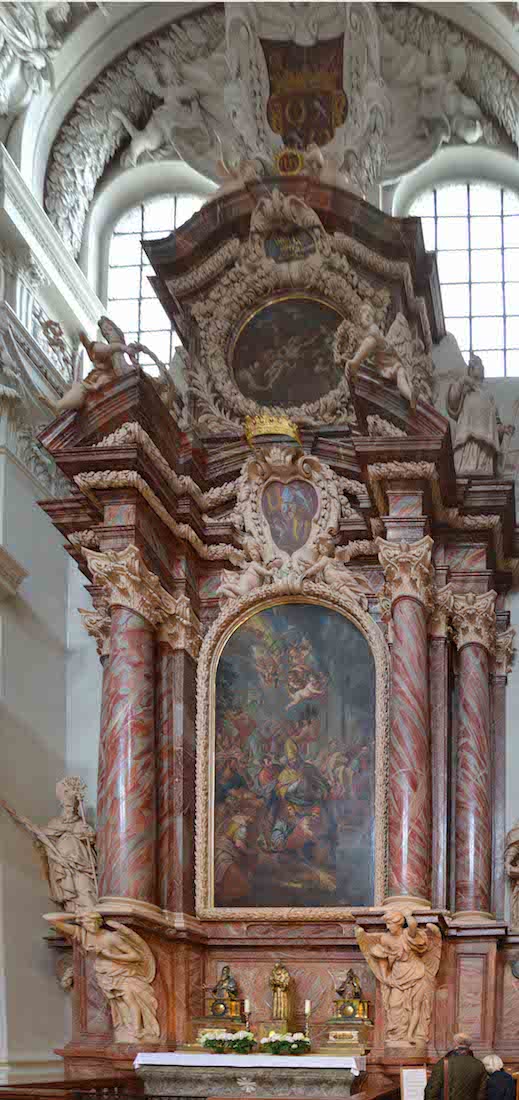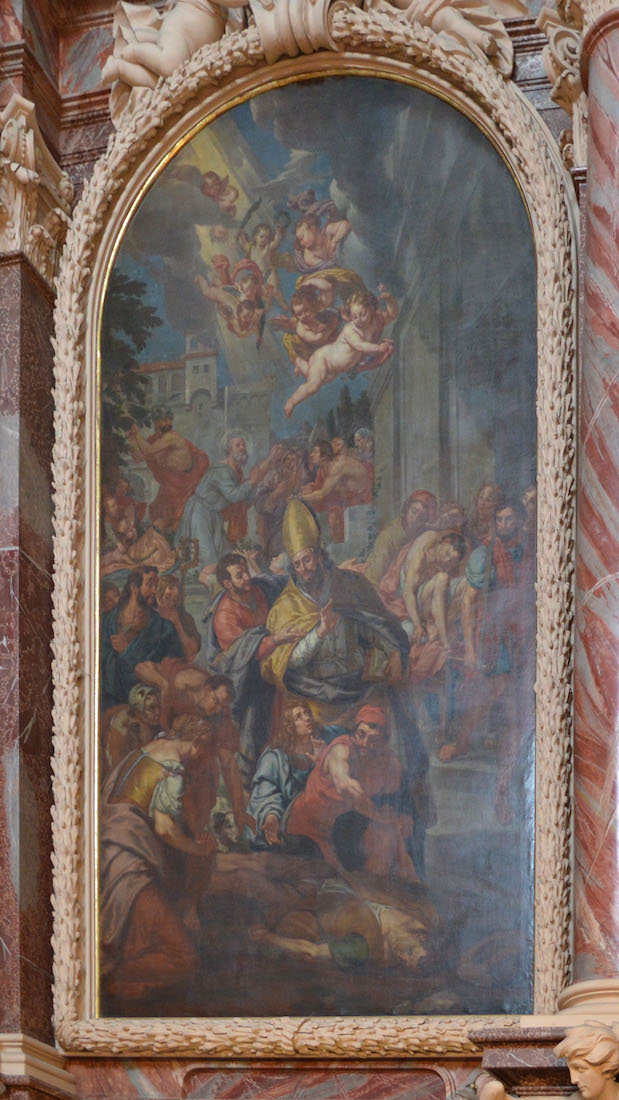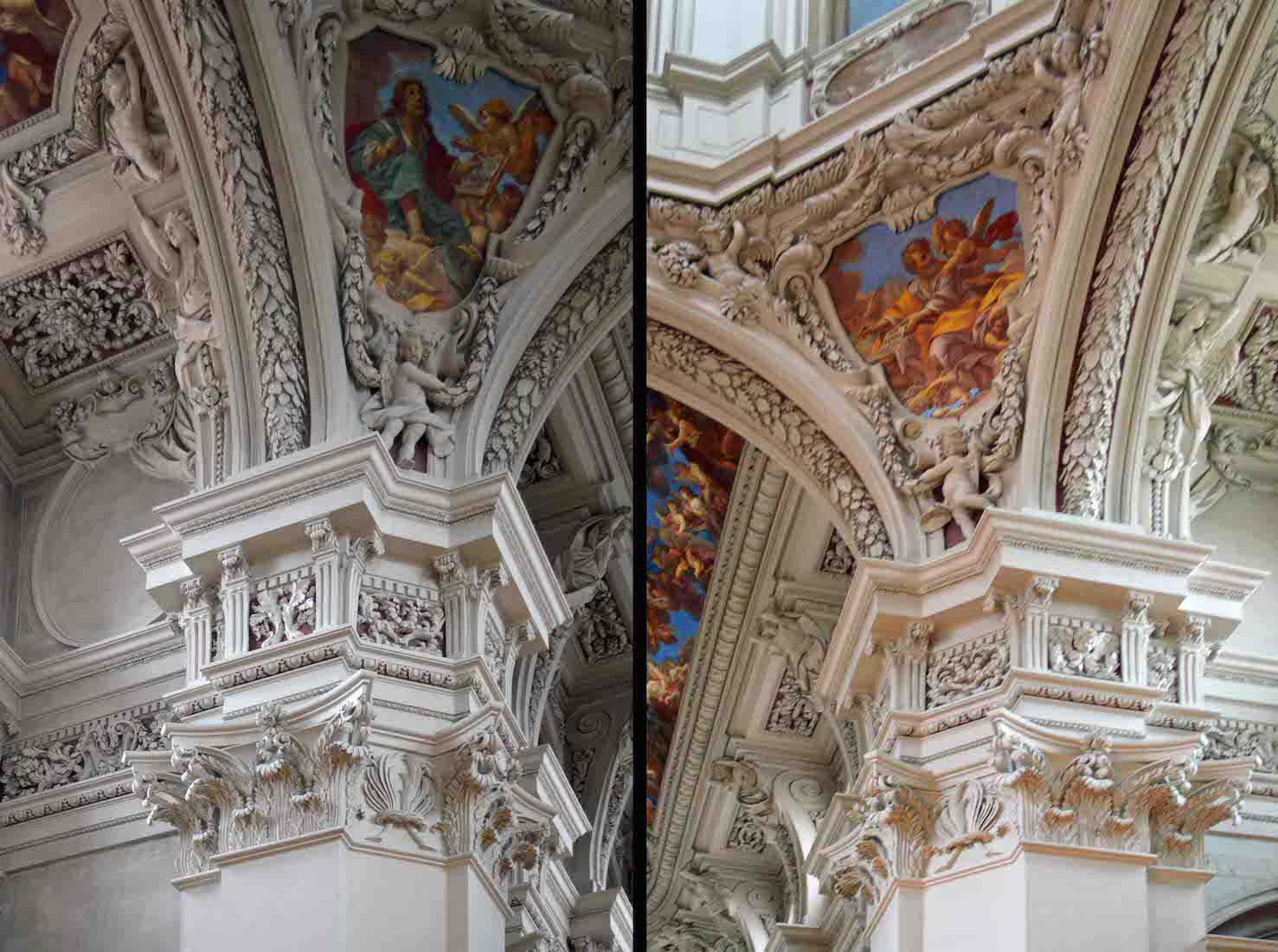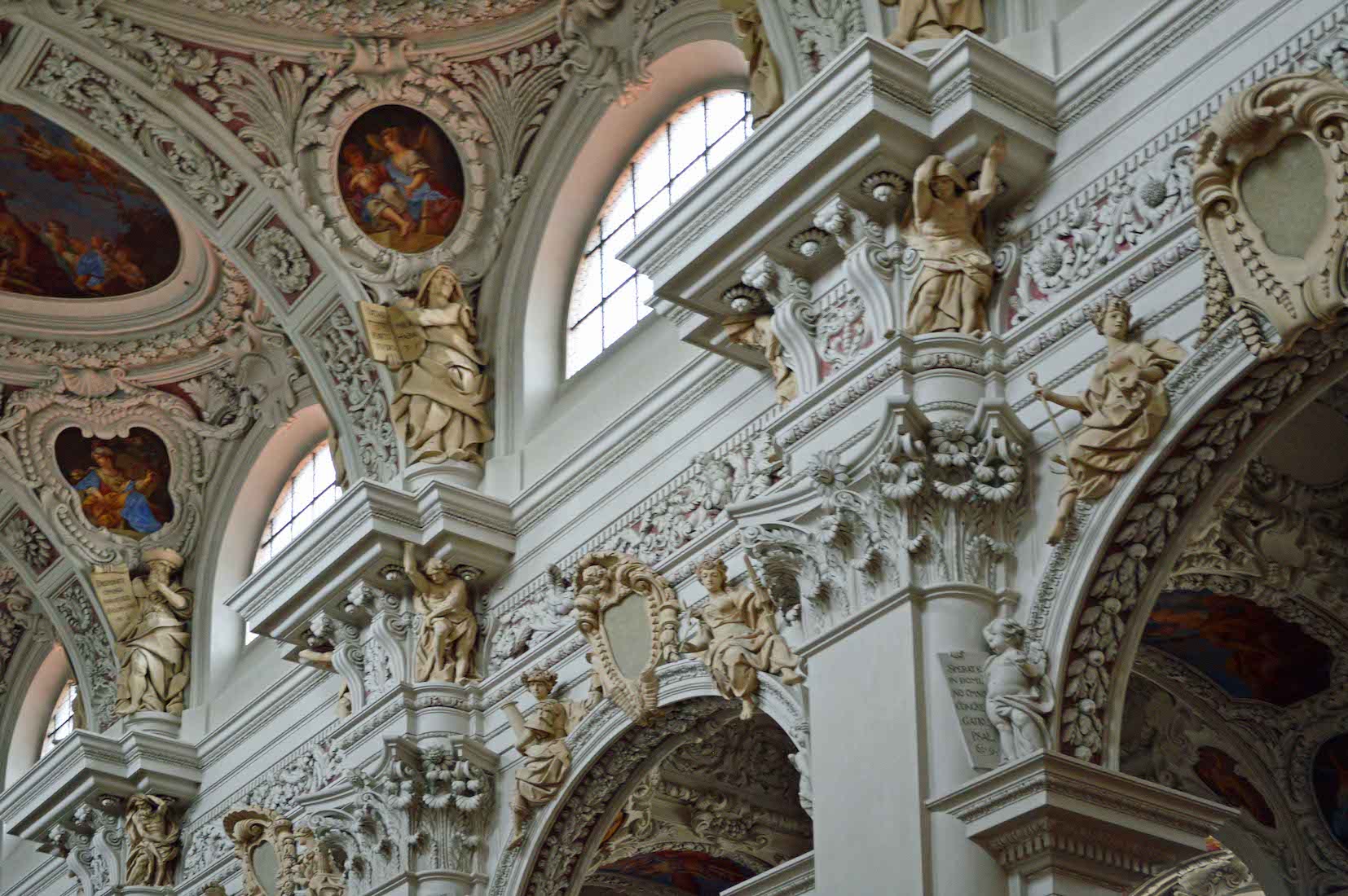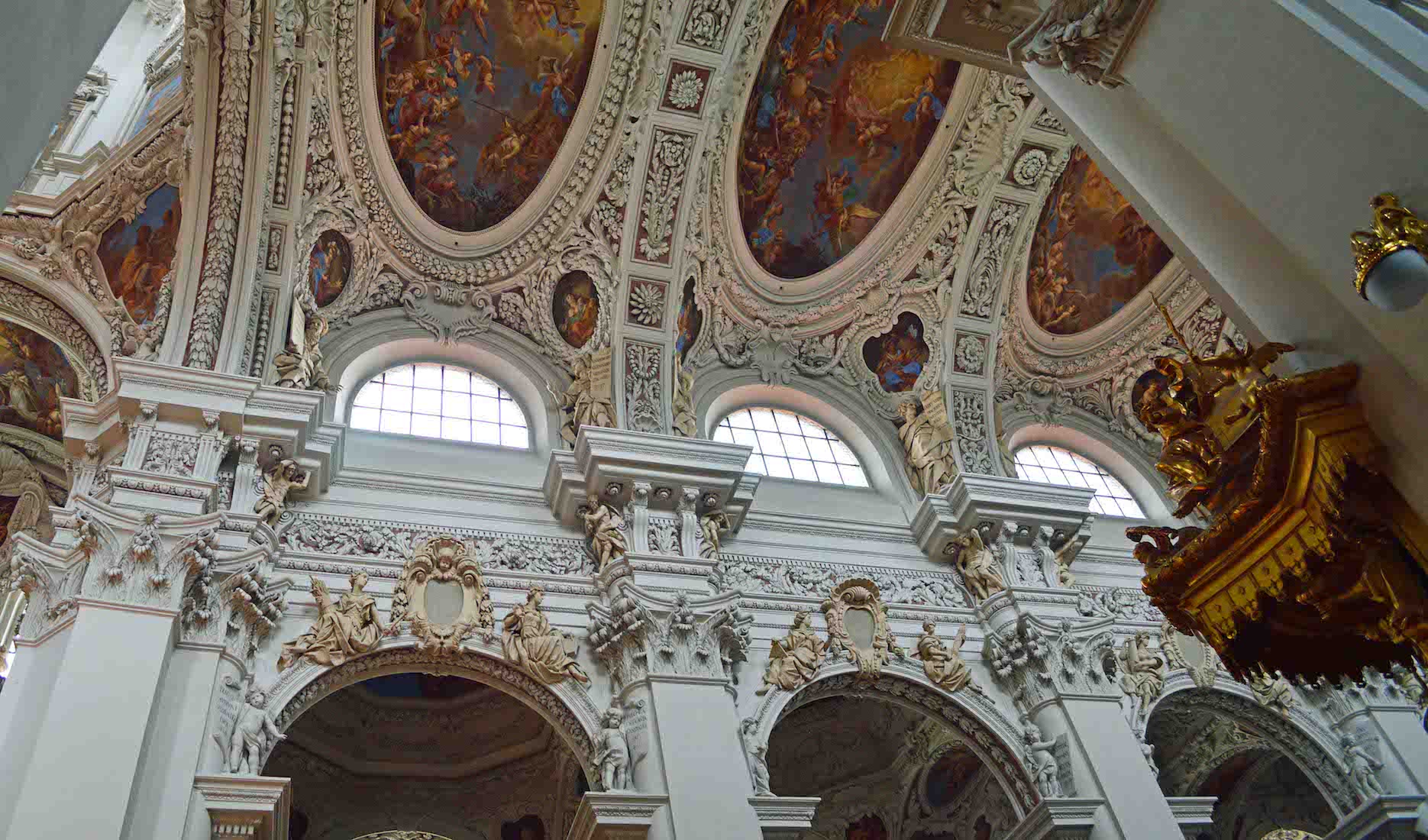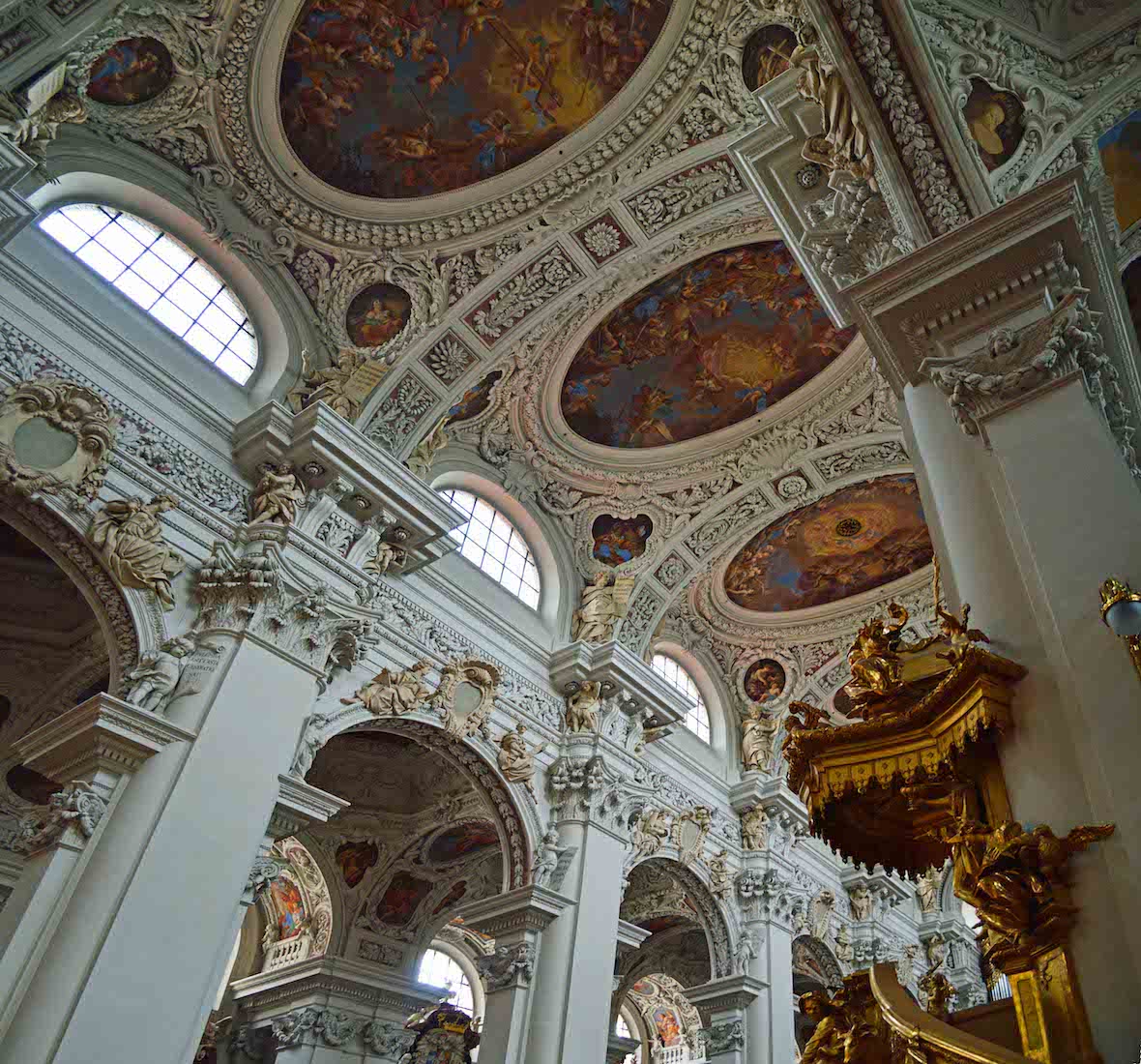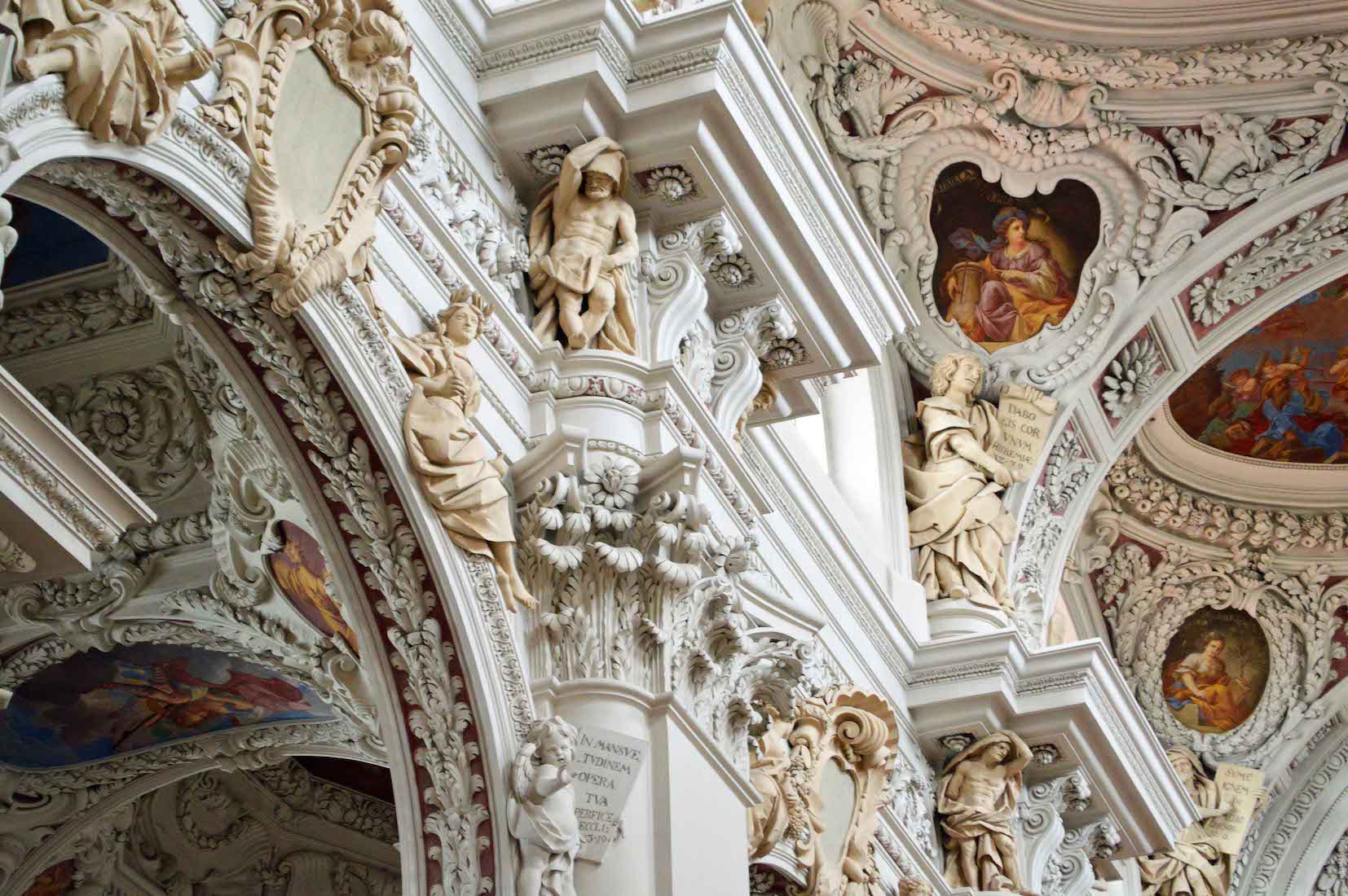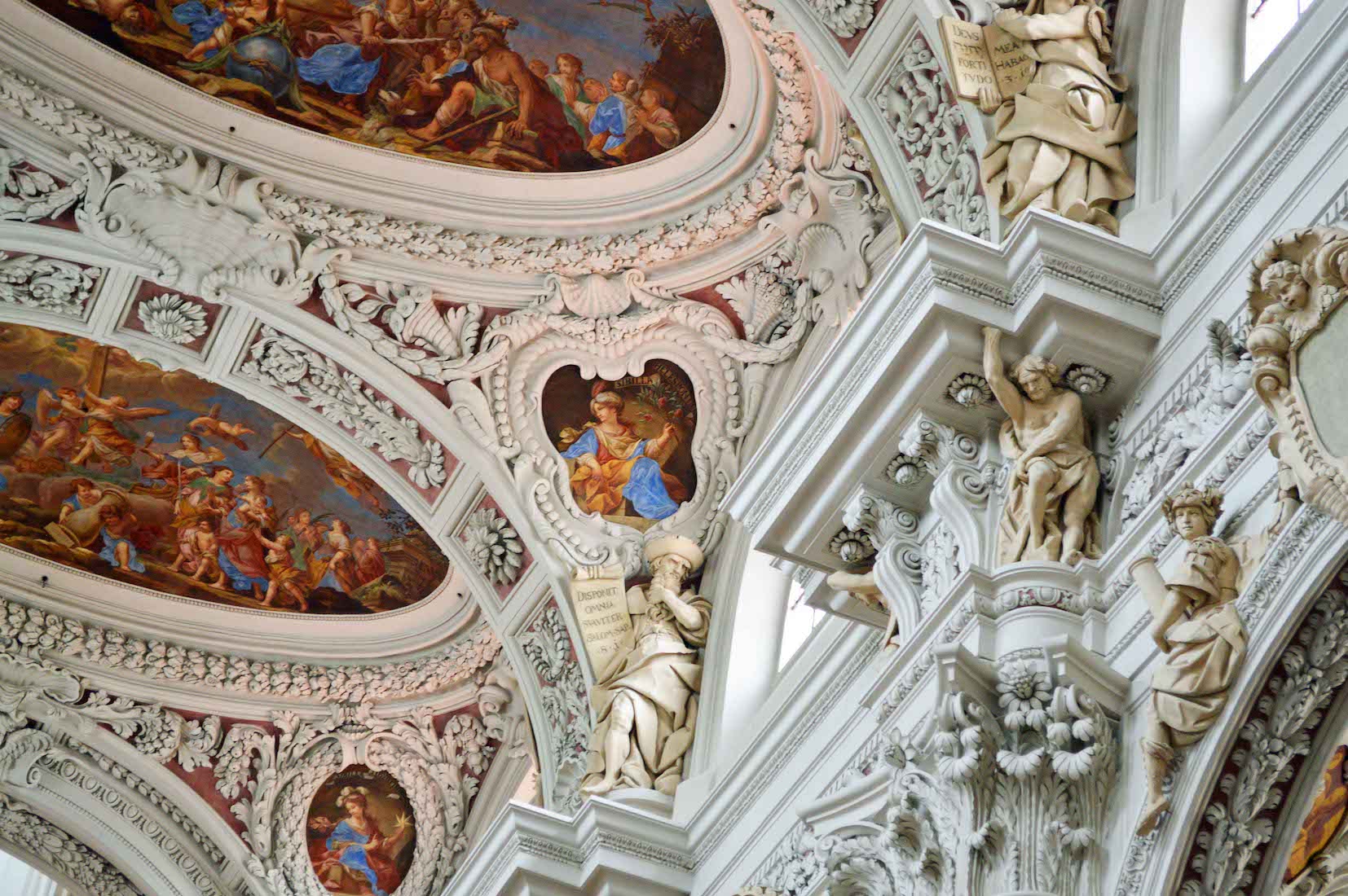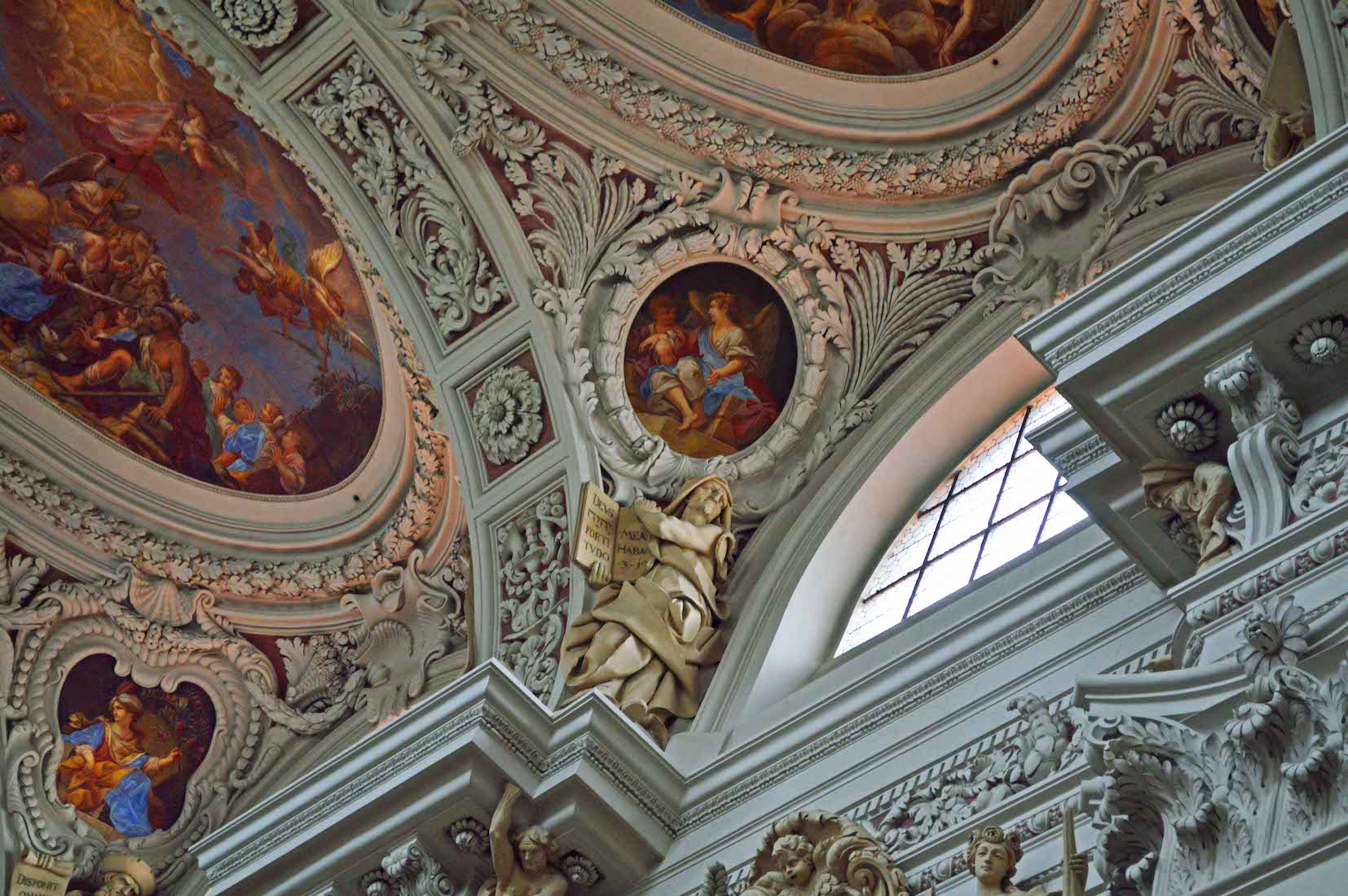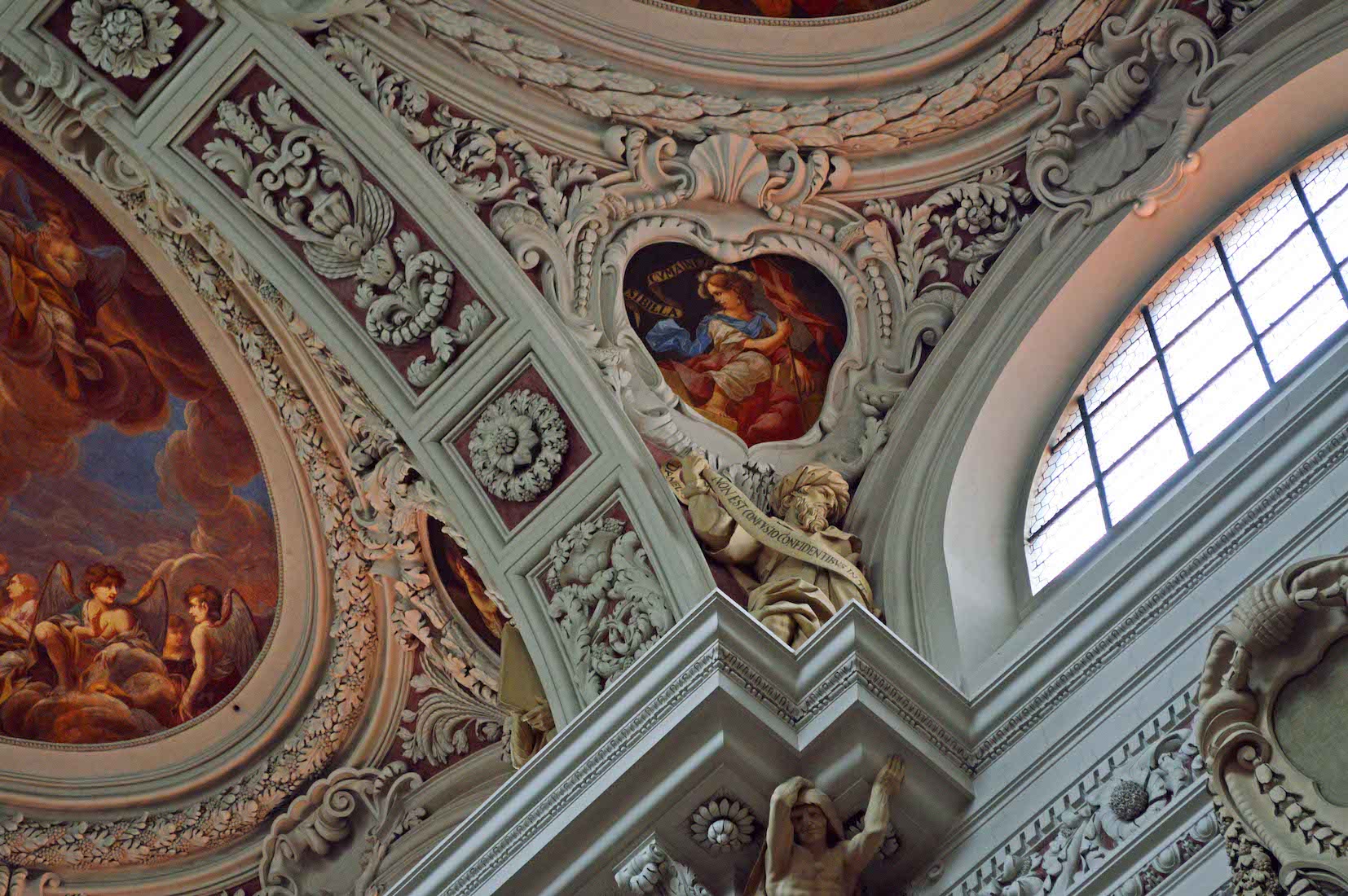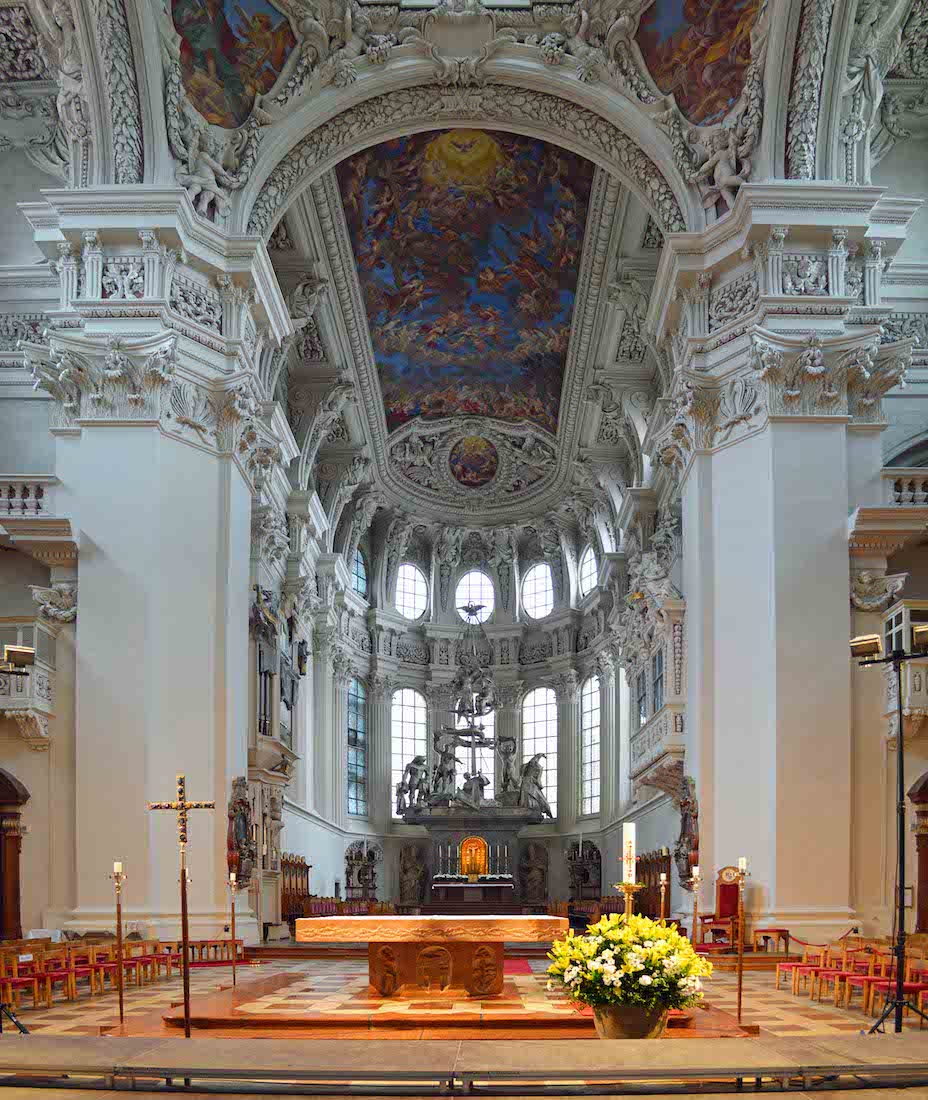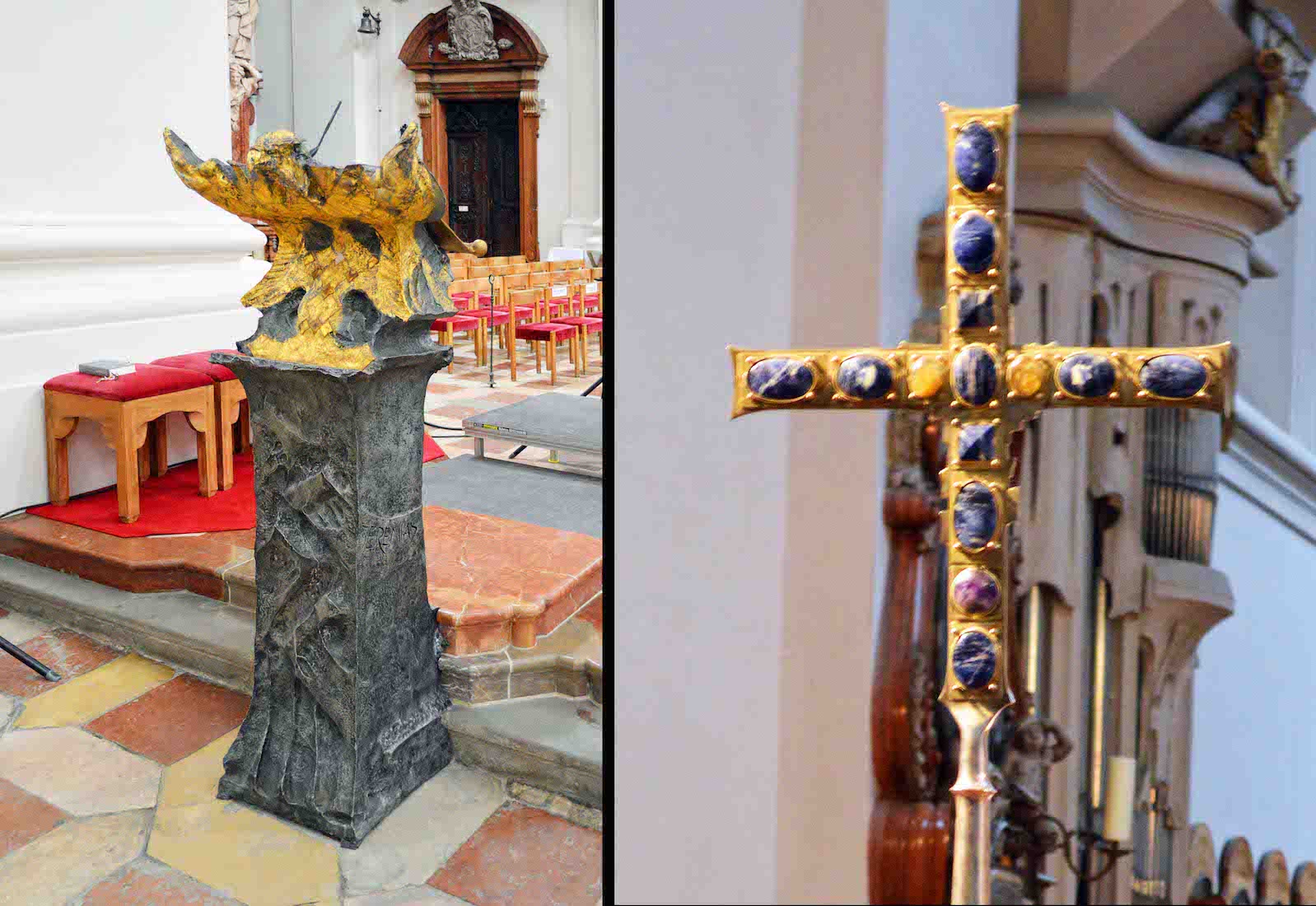42. ORGAN
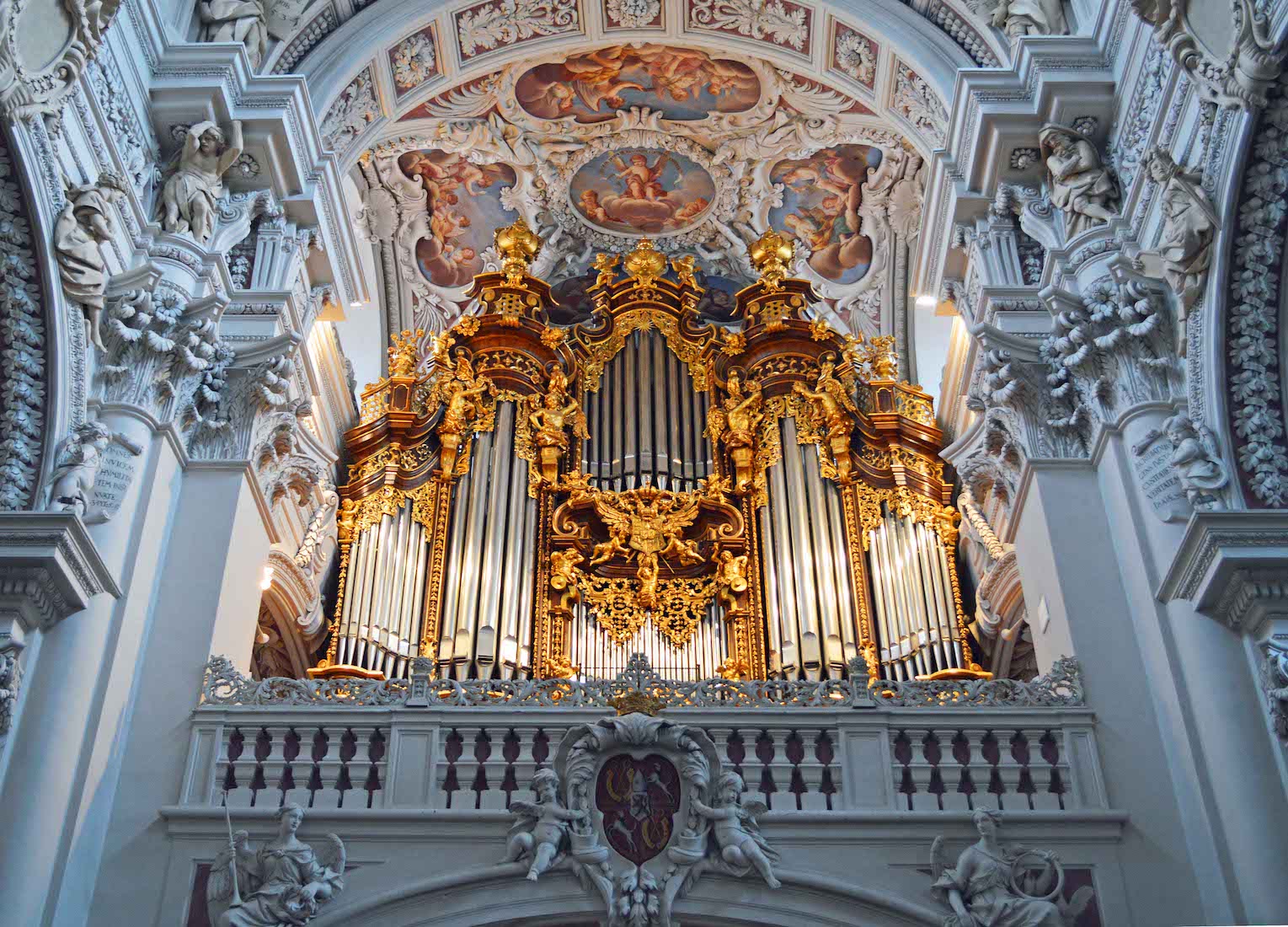
Regular organ recitals add to the already great attraction of Passau Cathedral. [q]
43. ORGAN CREST
This coat of arms is on the railing of the organ gallery. The mitre indicates an ecclesiastical connection, and a copy is included in a list of Passau bishops, but I can find no explicit connection. [q]
44. ORGAN FIGURES
These musical angelic figures sit on either side of the coat of arms. [q]
45. TWO MEMORIALS
These two memorials face the nave diagonally from two of the front columns.
47. NORTH TRANSEPT ALTAR DETAIL
As with all the side altars, there are detailed sculpted figures keeping watch. [o]
48. SOUTH TRANSEPT ALTAR
Our final side altar is in the South transept. This is the Valentine and Maximilian Altar, with a painting by de Neve (1687). [e]
49. SOUTH TRANSEPT PAINTING
Flemish painter Frans de Neve was born in Antwerp in 1606, and died in Antwerp around 1681.
50. CROSSING
It is interesting that the axis of the Cathedral kinks slightly to the North East of the Crossing. The Crossing dome is impressive, showing God the Father surrounded by rows of angels.
51. NAVE DECORATION I
We take time now to simply admire the sumptuous Baroque decoration.
52. NAVE DECORATION II
Wherever we look along the cornice, there are cherubic figures either holding up the capitals, or singing to the glory of God.
53. NAVE DECORATION III
Each large panel in the central aisle depicts some scene with a theme which carries over to the side altars.
54. NAVE DECORATION IV
The ceiling frescos were executed by Carpofor Tencalla from 1679. After his death in 1685, his work was carried on and completed by Matthias Rauchmiller and Carlo Antonio Bussi.
55. NAVE DECORATION V
The intricate detail makes one wonder how the work was ever started, and how it was kept to scale!
56. NAVE DECORATION VI
Interestingly, some of the figures hold up short passages of Scripture.
57. NAVE DECORATION VII
The detailed plaster ornamentation is usually referred to as ‘stucco’. Stucco is the fine plaster used for coating wall surfaces or moulding into architectural decorations.
58. NAVE DECORATION VIII
Fresco painting (as shown here) is a technique of mural painting executed upon freshly-laid, or wet lime plaster. A problem with this sort of work is getting the perspective right, so that figures are realistic when viewed at an angle.
60. AMBO AND PROCESSIONAL CROSS
The ambo stands near the North transept. It appears to be in the frequently occurring form of a golden eagle. The processional cross is encrusted with precious stones.


